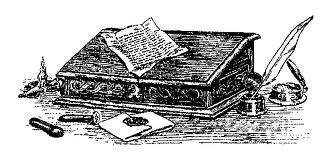I’ve just read the article by J. Kim Wright (of CuttingEdgeLaw) about the value and importance of putting business agreements in writing. I agree with Kim that one of the most valuable things you can do is put the agreements and understandings you have into writing – in words you understand and are fully comfortable with.

The ‘boilerplate’ language that many attorneys and pre-drafted document kits provide is often unintelligible – even to the experts and courts. This inscrutability makes the documents practically worthless – or worse, harmful – because the people who agree to be bound by them may have no real idea of the potential consequences of those contracts.
Traditionally, parties rely on the wording of their contract and on legal precedents for interpreting contract terms, as the way to define the meaning of their agreement and to enforce one another’s obligations to honor the bargain. This overarching dependence on wording can prove unreliable if the parties encounter unexpected circumstances or find themselves disagreeing in the course of carrying out their bargain.

When the writing becomes the sole repository of meaning, it often happens that the parties will go to battle over conflicting interpretations of terms and provisions while the reason the parties decided to work together is subverted and their beneficial relationship destroyed. The “bargain†may be enforced; but their agreement, and the value in their choice to work together, is not truly honored.
Whether we acknowledge it or not, the true power of an agreement is not in the written instrument. The power is with the people who have decided to take action together. If they understand the meaning of their agreement – the ultimate vision that they share and that is being served by their collaboration – then the terms of their contract are less likely to become weapons in controversies. Instead, the terms can be seen as guideposts that the parties set in place enabling them to achieve their shared vision. In this context, terms can be re-visited more readily when they no longer are serving the underlying purpose of the parties’ mutual efforts.
Over many years of research and practice, I have designed a set of questions to help people discover their shared vision, purpose, and goals when preparing to work together on a project or in business. I call this initial phase “Discovering Agreement†– because the focus is not on negotiating terms to which each will concede, but on discovering where they are already in agreement with one another and clarifying their shared vision.
Then, I offer a basic outline which provides guidance as, together, drawing on their own shared understanding, they put into writing their ‘Statement of Agreement and Action Plan’ describing the collaborative relationship that they have designed for themselves.
Here are some excerpts from one of the Statements of Agreement and Action Plans written using these tools:
Our Vision —
We envision a world where . . .
Our Mission –
Our mission is to support . . . in providing quality . . . by empowering them to . . .
Our Values –
We value a work setting where each of us has independence, authority, and autonomy to run our individual mission based efforts with our teams while others do the same. We are dedicated to kindness, respect, graciousness, and compassion towards ourselves and others in everything we do. We value innovation, courage, adaptability, excellence and profound enjoyment.
It is important to us that we each wake-up excited about the day ahead, interested in the things on our schedules, eager to begin. It is also important:
·      to each have, at a minimum, enough money to comfortably cover expenses plus money for fun;
·      to do our work for and in a way that creates a better world for all living beings;
·      to work with people who we care deeply about and who care deeply about us and one another; and
·      to have fun, laughter, and mutual support in our efforts.
Our Intent –
In our collaboration, each contributor’s mission is based on the desires, talents, and skills of that contributor. Collectively, our various contributory missions serve to drive our organization closer to its stated goals. Our shared Vision provides guidance to decision-making during mission implementation, and our Values inform how each mission is carried out. As leaders, we will decide which missions to undertake using the governance principles and frame-work laid out in this Statement of Agreement so that competing ideas are managed in a way that honors and engenders creativity and harmony. Our intent is to allow a freedom of execution while keeping the organization moving in the desired direction.
By exploring what each envisions for their respective roles, commitments and expectations, concerns and fears; and by setting in place a system for addressing change & engaging conflict, the individuals involved design their ideal collaborative relationship and create an “Action Plan†that accurately reflects their agreement.
For them, the word “agreement†does not mean “contractâ€; but signifies instead, their shared understanding of the purpose and meaning of the plan they’ve co-created for collaborative, mutually beneficial action. The written Statement of Agreement and Action Plan that they develop becomes their “User’s Manual” helping them track their progress and satisfaction with how the work is going. It will also help them work together to solve any problems that arise during the course of their collaboration and to make adjustments to the plan as needed in service of their shared vision and purpose.
When I facilitate “Discovering Agreement†sessions – the focus is not on negotiating terms to which everyone will concede; rather, it is on discovering where they are in agreement, designing their ideal relationship, and creating systems for sustaining their shared endeavour. The result is a Statement of Agreement and Action Plan that memorializes the understandings and agreements that the parties have discovered and confirmed through their mutual explorations.
For me, it is a refreshing approach, one I much prefer over the traditional “win-the-deal†approach that was so fundamental in my legal training and experience. At the end of a day of Discovering Agreement, more often than not, I and the parties are not exhausted; instead, we feel as if we have played all day. We leave full of inspiration, enthusiasm, and momentum.

For additional perspectives and background, you might like to explore:
www.iahl.org (International Alliance of Holistic Lawyers)
http://www.resolutionwithoutlitigation.com/Site/Home.html
Stewart Levine: The Book of Agreement
Marshall Rosenberg: NonViolent Communication
Dominic Barter: Restorative Circles
